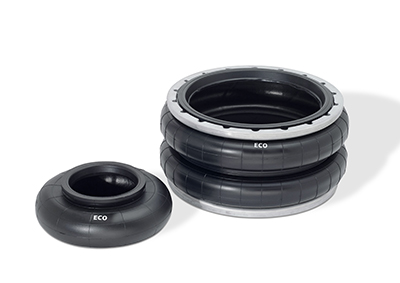 Even in harsh conditions involving a lot of dust and permanent vibrations, air actuators from ContiTech continue to work reliably, especially in construction machinery.
Even in harsh conditions involving a lot of dust and permanent vibrations, air actuators from ContiTech continue to work reliably, especially in construction machinery.
“With these properties, they offer added value compared with steel spring bearings or hydraulic cylinders, as disruptive vibrations are largely minimized,” said Douglas Duesing, sales manager of industry and off-highway air springs at ContiTech.
Whether in the mining industry or at a gravel plant, vibrating screens are used in processing plants to separate raw materials according to size and to filter out unwanted elements. The vibrations that occur during this process are transmitted to the steel structure of the vibrating screen, with the result that all components are placed under additional load.
Air actuators offer significant advantages over compression springs, leaf springs or rubber springs. The most striking feature is the low natural frequency in a range of between 1.5 and 3 Hertz. This allows the air actuators to achieve a strong isolating effect of up to 98%. In comparison, steel springs in screening machines usually have a natural frequency of 7 to 8 Hertz and an isolating effect between 65% and 75%.
Greater productivity, less noise
Hydraulic hammers are used to break down rocks in quarries as well as in road and tunnel construction. They consist of a housing, a striking mechanism and a chisel, which fits in the housing. The principle of operation: the oil pressure provided by the supplying device–usually an excavator—is converted into kinetic energy through a hydraulic cylinder and then transmitted to the chisel.
If an air actuator is also used in this application, the impact of the striking mechanism on the chisel is cushioned. This means an increased frequency of 1,000 to 1,500 impacts per minute can be achieved at forces of between 30 to 80 metric tons. As a result, productivity increases by up to 80% compared with conventional hydraulic hammers.
In addition, air actuators in hydraulic hammers reduce the noise level by up to 25 dB and isolate vibrations, with the result that the machine operator is exposed to weaker vibrations—a plus point when it comes to occupational health and safety. Another advantage: Hydraulic hammers equipped with air actuators can also be used under water, for example in port or canal construction.
Filed Under: Pneumatic Tips, Slider